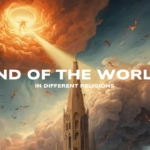Table of Contents
- Introduction: Who Is Imam Mahdi?
- Historical and Theological Foundations
2.1. Origins in Islamic Tradition
2.2. Imam Mahdi in Shi’a Thought
2.3. Sunni Perspectives on the Mahdi - The Concept of Occultation
- Signs of His Return and Eschatological Role
- The End of the World: Apocalyptic Visions and Final Judgment
- Impact on Contemporary Beliefs and Politics
- Scriptural and Hadith References
- FAQs on Imam Mahdi
- Conclusion and Call-to-Action
Introduction: Who Is Imam Mahdi?
Imagine a world where justice and peace prevail—a promise deeply woven into the fabric of Islamic eschatology. At the heart of this vision lies Imam Mahdi, a messianic figure prophesied to appear at the end of times to restore divine justice and righteousness. Revered in both Shi’a and, to a significant extent, Sunni traditions, Imam Mahdi embodies hope and renewal. This post explores his historical and theological foundations, the mystery of his occultation, the signs of his return, and his role in the ultimate end-of-the-world scenario.
Historical and Theological Foundations

Origins in Islamic Tradition
The concept of a savior who will emerge to restore justice has deep roots in Islamic tradition. The idea of the Mahdi—or “the guided one”—is found in numerous hadiths and commentaries. This figure is seen as the culmination of divine promise, a beacon of hope during times of turmoil.
Imam Mahdi in Shi’a Thought
In Twelver Shi’ism, Imam Mahdi is the twelfth and final Imam. Born to Imam Hasan al-Askari, he entered a state of occultation (ghayba) at a young age. Shi’a Muslims believe that:
- Divine Appointment: His leadership is divinely ordained.
- Symbol of Justice: His return will mark the end of oppression and the establishment of a just society.
- Spiritual Guide: He is revered not only as a political leader but as the ultimate spiritual guide for the ummah.
For further historical context, you can visit our History of Shia Islam post.
Sunni Perspectives on the Mahdi
While the concept of the Mahdi is more central in Shi’a theology, many Sunni scholars also hold that a Mahdi will emerge:
- Future Leader: Sunnis view the Mahdi as a reformer who will guide the community during tumultuous times.
- Less Emphasis on Occultation: Unlike the Shi’a, Sunnis place less focus on the prolonged hidden period and more on his eventual appearance.
- Unified Vision: In Sunni eschatology, the Mahdi often appears alongside other eschatological figures, such as Jesus (Isa), who together will usher in the final era of justice.
There are many differences between Shi’a and Sunni beliefs regarding the Mahdi, from his identity and role to the nature of his arrival. While Shi’a theology emphasizes his occultation and divine appointment, Sunni thought focuses more on his emergence as a reformer. For a more detailed exploration of these differences, visit our dedicated post on the topic.
The Concept of Occultation
A distinctive aspect of Shi’a belief is the notion of occultation (ghayba). This refers to the period when Imam Mahdi is hidden from public view:
- Minor and Major Occultation: Initially, during the minor occultation, he communicated through appointed deputies. Later, he entered a major occultation, during which he remains hidden.
- Test of Faith: This hidden phase is seen as a test for the faithful, reinforcing trust in divine wisdom.
- Awaited Reappearance: Believers hold that when the world reaches a state of extreme injustice and turmoil, Imam Mahdi will reappear to restore balance and order.
Signs of His Return and Eschatological Role
Islamic eschatology is rich with signs that signal the imminent return of Imam Mahdi. These include:
- Widespread Injustice: A decline in moral and social values, marked by rampant corruption and oppression.
- Celestial and Natural Phenomena: Unusual events in the heavens and on earth are interpreted as harbingers of his reappearance.
- Global Turmoil: Increased conflicts and chaos signal that the world is nearing its final phase, necessitating the intervention of a divinely guided leader.
For Shi’a Muslims, the reappearance of Imam Mahdi will usher in an era of divine justice, while many Sunnis also view his emergence as a catalyst for global reform.
The End of the World: Apocalyptic Visions and Final Judgment
In Islamic eschatology, Imam Mahdi’s return signals the ultimate end of the world. This apocalyptic vision unfolds through several dramatic events:
- The Rise of Dajjal: Many traditions warn that Dajjal (the Antichrist) will emerge, deceiving people and spreading tyranny before the final days.
- Descent of Isa (Jesus): Isa will descend to join Imam Mahdi, and together, they will defeat evil and restore order.
- Cataclysmic Events: Natural disasters, celestial disturbances, and unprecedented social upheaval will serve as signs of the approaching Day of Judgment.
- Final Judgment: These events will culminate in divine reckoning, where God will hold every soul accountable for its deeds.
Imam Mahdi plays a pivotal role in this eschatological framework. He will lead the faithful, eradicate tyranny, and establish divine justice before the final judgment.
Impact on Contemporary Beliefs and Politics
The promise of Imam Mahdi’s return continues to shape religious thought and even political discourse:
- Religious Identity: For many, especially within Shi’a communities, belief in Imam Mahdi fortifies a collective identity rooted in hope and resilience.
- Political Symbolism: In regions rife with injustice, political movements sometimes invoke his anticipated return as a call for reform and resistance against oppression.
- Interfaith Dialogue: The eschatological narratives surrounding Imam Mahdi and the end of the world foster broader discussions on justice, morality, and global ethics.
Scriptural and Hadith References
The belief in Imam Mahdi is anchored in various hadiths and interpretations of sacred texts:
- Hadith of Thaqalayn: The Prophet Muhammad is reported to have said, “I leave behind two precious things, the Book of Allah and my Ahl al-Bayt (family),” which underscores the significance of the Prophet’s family in guiding the ummah.
- Prophetic Traditions: Numerous hadiths describe the signs of the end times, the emergence of a guided leader, and the eventual defeat of evil forces. These narrations provide the theological framework for the belief in Imam Mahdi.
- Qur’anic Allusions: While the Qur’an does not explicitly name Imam Mahdi, various verses are interpreted by scholars as foretelling the advent of a righteous leader who will restore justice and peace.
These references form the bedrock of Islamic eschatological belief, linking the concept of Imam Mahdi with the broader narrative of the end of the world.
FAQs on Imam Mahdi
Q1: Who is Imam Mahdi?
A1: Imam Mahdi is the prophesied savior in Islamic eschatology, revered as the twelfth Imam in Twelver Shi’ism and recognized in Sunni traditions as a future leader who will restore justice and righteousness.
Q2: What is the concept of occultation in relation to Imam Mahdi?
A2: Occultation refers to the period during which Imam Mahdi is hidden from public view. In Shi’a belief, this hidden phase is a test of faith, with his eventual return signifying the onset of divine justice.
Q3: How do the signs of his return relate to the end of the world?
A3: Traditional signs include widespread injustice, natural and celestial anomalies, and global turmoil. These events are seen as precursors to the reappearance of Imam Mahdi, which will herald the final phase before the Day of Judgment.
Q4: Do both Shi’a and Sunni Muslims believe in Imam Mahdi?
A4: Yes, while his role is more central in Shi’a theology, many Sunni scholars also acknowledge the concept of the Mahdi as a future leader who will appear during the end times to restore order.
Q5: What is the significance of the end-of-the-world scenario in Islamic eschatology?
A5: The end-of-the-world scenario encompasses apocalyptic signs, the rise of figures like Dajjal, the descent of Jesus, and ultimately the Day of Judgment. It is the framework within which Imam Mahdi’s return is anticipated to bring about a new era of divine justice.
Conclusion
Imam Mahdi stands as a powerful symbol of hope, justice, and renewal in Islamic eschatology. His awaited return not only marks the end of an era of widespread injustice but also signals the dawn of a new, divinely guided world order culminating in the final judgment.



